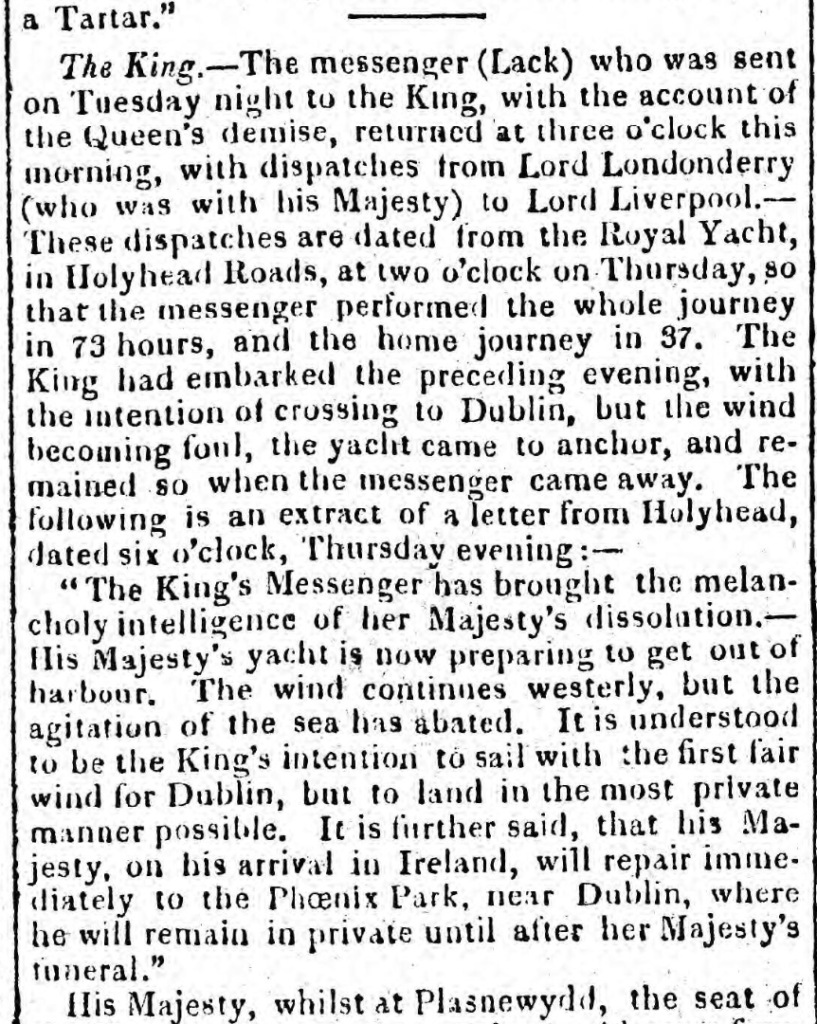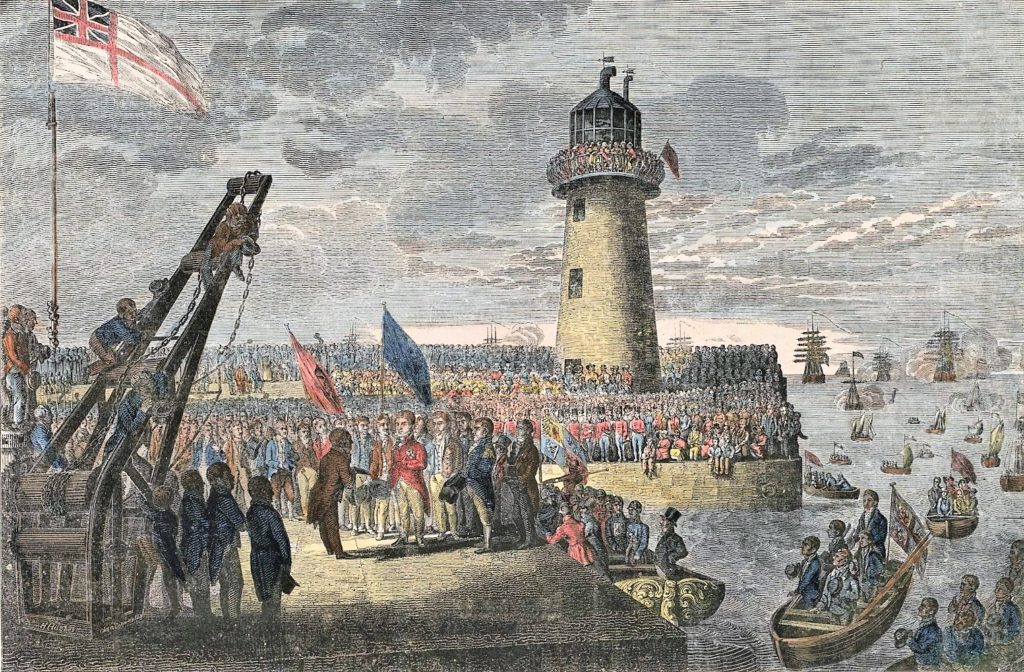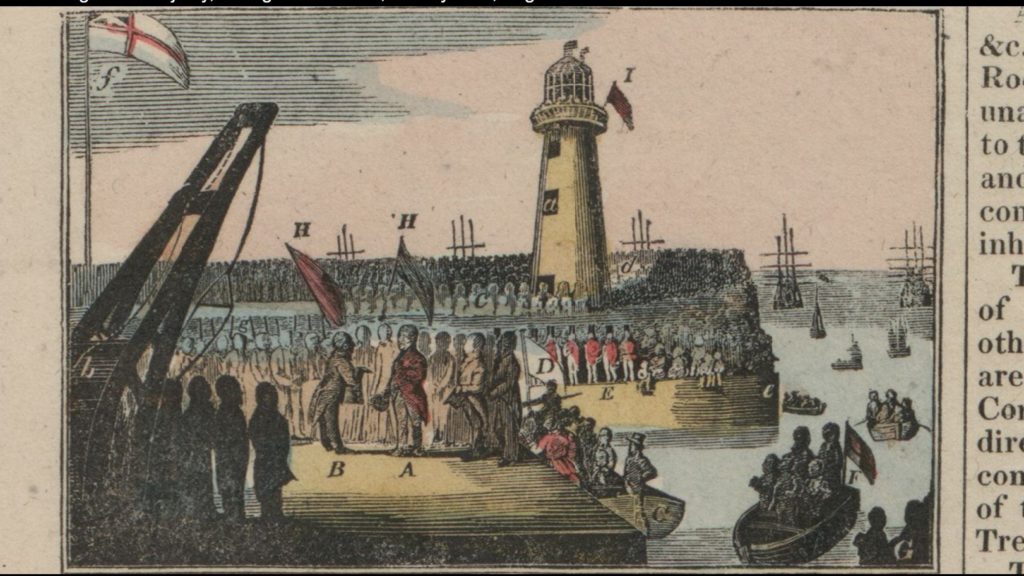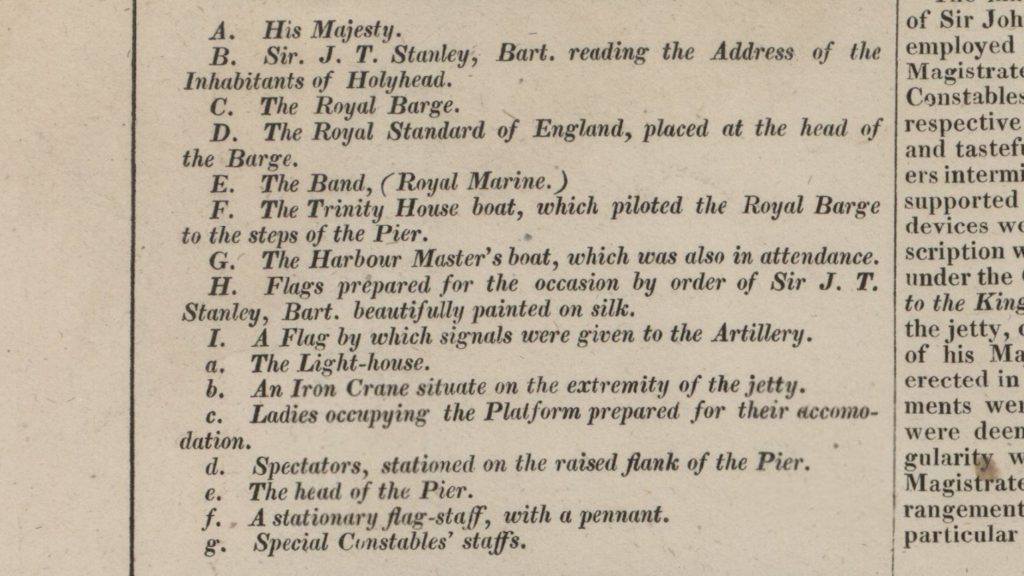KING GEORGE IV AND HOLYHEAD
As part of my work for the Ports, Past and Present project, I am researching the historical development of Holyhead town and harbour, including historical events for which the entire community turned out. One such event was King George IV’s stop-over on his way to Ireland in late July 1821. Several newspapers reported daily updates on the king’s progress west, including Wales’s first weekly periodical The Cambrian, and reached fever pitch with their detailed accounts of the king’s arrival on Anglesey, the rousing welcome given to him by the good people of Holyhead, particularly the women who donated their shawls as cushions — and his eventual retreat to Plas Newydd owing to adverse weather conditions which prevented his departure in the royal yacht. It was also on this journey that George was informed of the death of his wife, Caroline von Braunschweig, but so estranged had they become that this news did not halt the royal train or, God forbid!, made him cancel his visitation to Ireland.

Newspaper item from The Cambrian, 18 August 1821, p. 2.

Newspaper item from The Cambrian, 18 August 1821, p. 2.

Newspaper item from The Cambrian, 18 August 1821, p. 2.
The initial reception of the King by the people and venerables of Holyhead was commemorated shortly thereafter in an elaborate etching.

The landing of his Majesty, George the Fourth, at Holyhead, August 7th 1821. Image in the collection of the National Library of Wales, Aberystwyth.
This etching proved fairly popular and resulted in another, simplified re-print that also included several explanations to the people shown in the image, identification of several of the built structures in the harbour and roles of the vessels. It was further attributed with another detailed description of the event — minus the passing of Caroline.

The landing of his Majesty, George The Fourth, at Holyhead, August 7th 1821. From the collection of the National Library of Wales, Aberystwyth.

The landing of his Majesty, George The Fourth, at Holyhead, August 7th 1821. From the collection of the National Library of Wales, Aberystwyth.
After several days of adverse westerly winds which kept the royal yacht trapped in Holyhead harbour, the king was eventually persuaded to undertake the crossing of the Irish Sea in a common steamboat in the service of the Royal Mail. The formidably named Lightning was captained by none other than John MacGregor Skinner, a seasoned and well-respected mariner of old, hailing from the former North American colony of recent independence, who had plied the Irish Sea in the service of conveying the mail for several years. This painting commemorates this somewhat unusual conveyance of a king in a common steam vessel, but with the requisite picturesque drama and aplomb.

George IV on board the ‘Lightning’, the first Post Office Steam Packet to Dublin, 12 August 1821. Painting by Huggins, William John. In the National Maritime Museum, Greenwich, London, Caird Collection.
Following King George IV’s successful crossing of the Irish Sea in Captain Skinner’s Lightning, the steamboat was re-named George the Fourth. Unfortunately, further fame was dampened for this vessel as she broke down in a storm and had to be towed back to Holyhead by the Meteor just a few months later. Some might have called it a dark portent, but it did not deter the good people of Holyhead in commemorating this exciting event in the town history for future generations. In order to mark the spot of His Majesty’s departure, as well as marking the end of Thomas Telford’s famous road from London, a triumphal arch was constructed and stands there to this day.

A plan of a triumphal memorial intended to be erected by subscription on the pier at Holyhead in honour of the visit of His Majesty George IV, to the principality of Wales on the 7th. of August 1821, by Thomas Harrison Esq. Architect. From the collection of the National Library of Wales, Aberystwyth.

